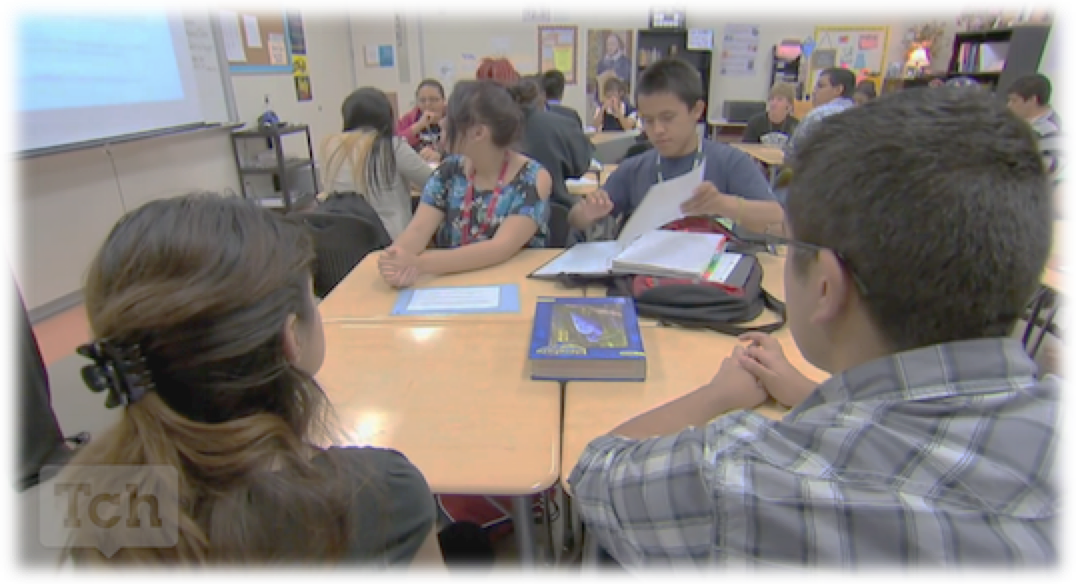Cultural Diversity in Our Classrooms
x
1. Developing Cultural Sensitivity to Our Students
Ethnocentrism
Ethnocentrism refers to how we see our world, and the "color" in which we see it. The lens from which we view the rest of the world is largely a result of our cultural upbringing, and has a great bearing on our interactions with others, including with the immigrants we encounter on a daily basis. Think about those we meet who do not speak a version of English we understand, or speak with a heavy accent. Ethnocentrism is about our attitudes toward others, toward foreigners, and it fuels our tolerances in general.
The mainstream dominant culture in any country, notwithstanding the United States, is what is reflected in what is taught in schools, the text that is used, the standards and the assessments. Schools across the United States are grounded in the beliefs shaped by the mainstream dominant culture. Thus, the hidden curriculum in schools reflects the underlying values of the mainstream culture. These beliefs often unwittingly created barriers for minority students, and newcomers to the country. Cross-cultural conflicts are encountered in every area of life, especially in school through beliefs, values, and behaviors that might conflict with a host country's.
For instance, non-native speakers of English are automatically considered to be newcomers, and are regarded as such largely due to a lack of communication. Instinctively, those who have no accent, with whom language happens easily or perhaps they learned the language early enough to bypass a notable accent, are typically understood and accepted better. Someone with an accent, despite how good they may read, write, or what level of English language proficiency they are in, may never be fully accepted as American because they do not speak, and therefore look, like a native English speaker. Those who speak English well are presumed to know the rules of the culture. We also have a tendency to forgive those who do have an accent, and shrug a seemingly innocent language mistake, whether it was intentional, disparaging, or truly within their language learning curve, as simply a mistake. Without an accent, the expectations go much higher.
Think about the aspect of time for example. In our culture, it is perceived as rude to be late to an event, especially after the event has started. In other countries like Spain, events usually do not begin at the  stated time, therefore most people arrive late; it is customary. If someone from that culture came here and were invited to their first event, they would perceive it perfectly fine to be late, however it wouldn't be perceived that way from native English speakers or U.S. citizens would it? This is but one example. Many of our second language students have fear of authority figures, and are taught it is disrespectful to make eye contact with adults, speak out of turn, or even make a gesture to speak like raising one's hand.
stated time, therefore most people arrive late; it is customary. If someone from that culture came here and were invited to their first event, they would perceive it perfectly fine to be late, however it wouldn't be perceived that way from native English speakers or U.S. citizens would it? This is but one example. Many of our second language students have fear of authority figures, and are taught it is disrespectful to make eye contact with adults, speak out of turn, or even make a gesture to speak like raising one's hand.
What about in the classroom where we are expected to begin and end a class at a specific time? Should we be expected to change our rules and expectations for a select unwitting few? No, but we should come to understand our students. This is what is considered a challenge to our cultural beliefs, and when we have second language learners, students from other countries, they can be challenged on a daily basis. The principle of being late is not negative, clashes are bound to occur. Schedule appointments with parents carefully, conferences with students, and make your expectations clear from the onset about the concept of time and tardiness.
Here are some suggestions and recommendations for getting to know our students, with culture in the background and in the foreground:
- Get to know the culture of students by researching their surface culture: history and backgrounds of the countries they are form: languages, cultural norms, values, behaviors, beliefs, non-beliefs, traditions, customs, and even foods. Research their deep culture as you can, along with values, family roles, expectations for behavior, roles for males, females, and even familial roles.
- Make home visits when possible to get to know the family and the students' living circumstances. Usually the family appreciates the interest of a teacher when he or she shows up. The formation of a partnership will quickly begin to surface as you engage them in their child's education.
- Attend neighborhood and local cultural events to get to know the insides of their culture. Conduct your own action research! Ask students probing questions about their own cultural practices. This will also open up conversation, and healthy language practice.
- Teachers can focus on inquiry-based and discovery-oriented thematic units on topics that relate to the interests of the students, and that are culturally and socially relevant to them.
- Offer a challenging curriculum with enough time to complete tasks, but provide scaffolding for students by activating prior knowledge, providing schema or background knowledge to help them transition the unknown to the familiar. Provide an equal and equitable academic playing field culturally, linguistically.
- Provide feedback regularly and call on students equally. Modify your questioning strategies according to the level of the language proficiency of the student.
- Integrate multicultural viewpoints and histories into the daily curriculum.
- Learn about, and practice with, diverse learning and teaching styles to accommodate culturally appropriate classroom behaviors associated with each culture.
- Encourage learning within appropriate sociocultural and linguistic situations. Incorporate the students' native language within the learning situations as they apply, and when possible. Be aware of a classroom management style that students may be familiar with, and hep them with the transition to yours.
- Seek to understand their parents and help them be aware of school routines and procedures.
- Develop higher order knowledge and thinking skills through a modified and differentiated curriculum that employs a variety of learning strategies so that expectations are the same for all students.
- Use cooperation, collaboration, and community-oriented instruction for breadth of social and academic experiences within a nonthreatening classroom environment.
- Be aware of your own ethnocentric attitudes and attempt to refine your own cultural negotiation skills knowing that language and culture play such a vital role in identity formation.